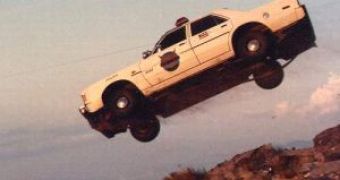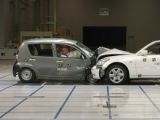Scientists around the world, financed by governments and private institutions have been trying since 1977 to develop the driverless car (driver autopilot, autonomous vehicle, auto-drive car, or automated guided vehicle), a science fiction issue seen in movies, from "Total recall" to "Minority report".
Automated guided vehicles would effectively eliminate nearly all hazards associated with driving as well as driver fatalities and injuries (traveling by car is currently one of the deadliest forms of transportation, with over a million deaths annually worldwide).
Drunk driving would also be gone.
A personal automatic driver would save time for work, leisure, or rest and would transport children everywhere.
A driverless car would boom the economic efficiency: transportation would be more efficient and reliable and would also reduce traffic congestion by allowing cars to travel faster and closer together.
But till we go to a bar and return home driven by the autopilot, there are many obstacles to pass and by now, this is a technology of the future.
In order to drive a car, a system would need to understand its immediate environment (sensors), know where it is and where it wants to go (navigation), find its way in the traffic (motion planning) and operate the mechanics of the vehicle (actuation).
Navigation and actuation are technologies already available, and the sensors are partially developed, but improving fast.
The main unsolved part of developing a driverless car is the motion planning.
Currently, the only cars that move without a driver are those used for testing resistance to collision and for spectacular movie scenes.
They just employ actuation: usually, these cars are maneuvered from distance, using radio signals and eliminating this way the risk for the stuntmen in the most dangerous situations.
The faking of a car for movie scenes is made by installing:
- an antenna receiving the remote control commands;
-radioreceiver;
-compressed nitrogen tube;
-electrically commanded valves;
-pneumatic pistons that maneuver the pedals;
-pneumatic piston maneuvering the wheel.
At the signal received by radio, the receiver transmits a specific electric signal to the valves which command the pneumatic pistons.
The pistons act on the wheel, the lever of the gearbox, the clutch, the gas pedal or the brakes of the vehicle.
The telecommanded vehicle jumps over abyss, explodes or makes any other stunt that overpasses the abilities of a stuntman.

 14 DAY TRIAL //
14 DAY TRIAL // 
